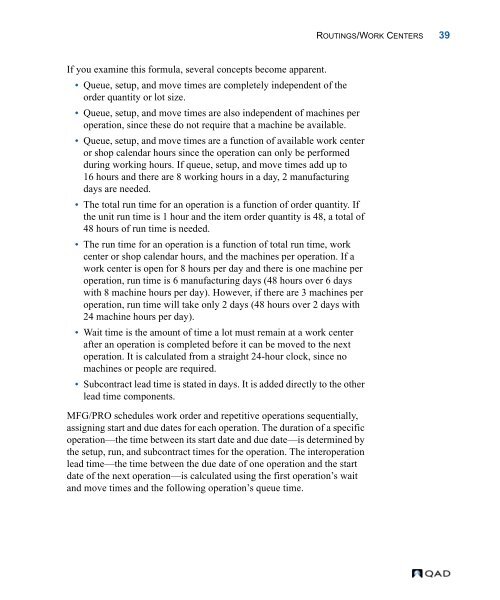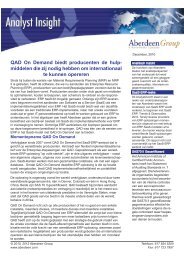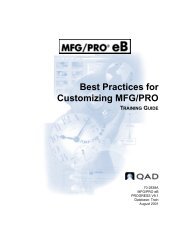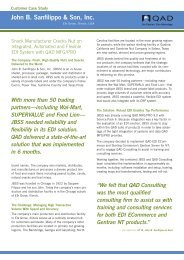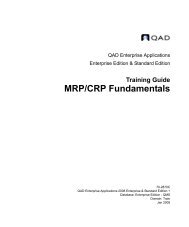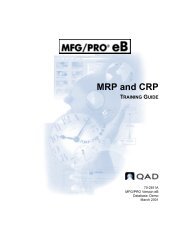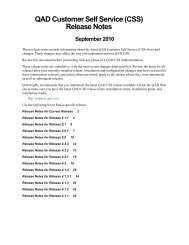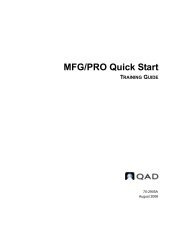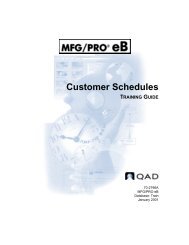MFG/PRO 9.0 User Guide Volume 3: Manufacturing - QAD.com
MFG/PRO 9.0 User Guide Volume 3: Manufacturing - QAD.com
MFG/PRO 9.0 User Guide Volume 3: Manufacturing - QAD.com
You also want an ePaper? Increase the reach of your titles
YUMPU automatically turns print PDFs into web optimized ePapers that Google loves.
If you examine this formula, several concepts be<strong>com</strong>e apparent.<br />
• Queue, setup, and move times are <strong>com</strong>pletely independent of the<br />
order quantity or lot size.<br />
• Queue, setup, and move times are also independent of machines per<br />
operation, since these do not require that a machine be available.<br />
• Queue, setup, and move times are a function of available work center<br />
or shop calendar hours since the operation can only be performed<br />
during working hours. If queue, setup, and move times add up to<br />
16 hours and there are 8 working hours in a day, 2 manufacturing<br />
days are needed.<br />
• The total run time for an operation is a function of order quantity. If<br />
the unit run time is 1 hour and the item order quantity is 48, a total of<br />
48 hours of run time is needed.<br />
• The run time for an operation is a function of total run time, work<br />
center or shop calendar hours, and the machines per operation. If a<br />
work center is open for 8 hours per day and there is one machine per<br />
operation, run time is 6 manufacturing days (48 hours over 6 days<br />
with 8 machine hours per day). However, if there are 3 machines per<br />
operation, run time will take only 2 days (48 hours over 2 days with<br />
24 machine hours per day).<br />
• Wait time is the amount of time a lot must remain at a work center<br />
after an operation is <strong>com</strong>pleted before it can be moved to the next<br />
operation. It is calculated from a straight 24-hour clock, since no<br />
machines or people are required.<br />
• Subcontract lead time is stated in days. It is added directly to the other<br />
lead time <strong>com</strong>ponents.<br />
<strong>MFG</strong>/<strong>PRO</strong> schedules work order and repetitive operations sequentially,<br />
assigning start and due dates for each operation. The duration of a specific<br />
operation—the time between its start date and due date—is determined by<br />
the setup, run, and subcontract times for the operation. The interoperation<br />
lead time—the time between the due date of one operation and the start<br />
date of the next operation—is calculated using the first operation’s wait<br />
and move times and the following operation’s queue time.<br />
ROUTINGS/WORK CENTERS 39


